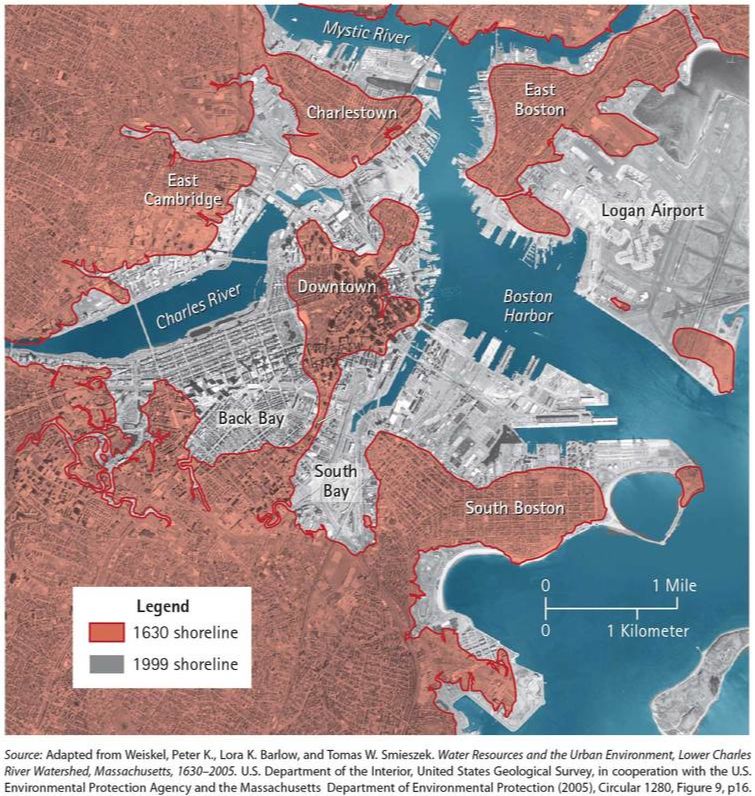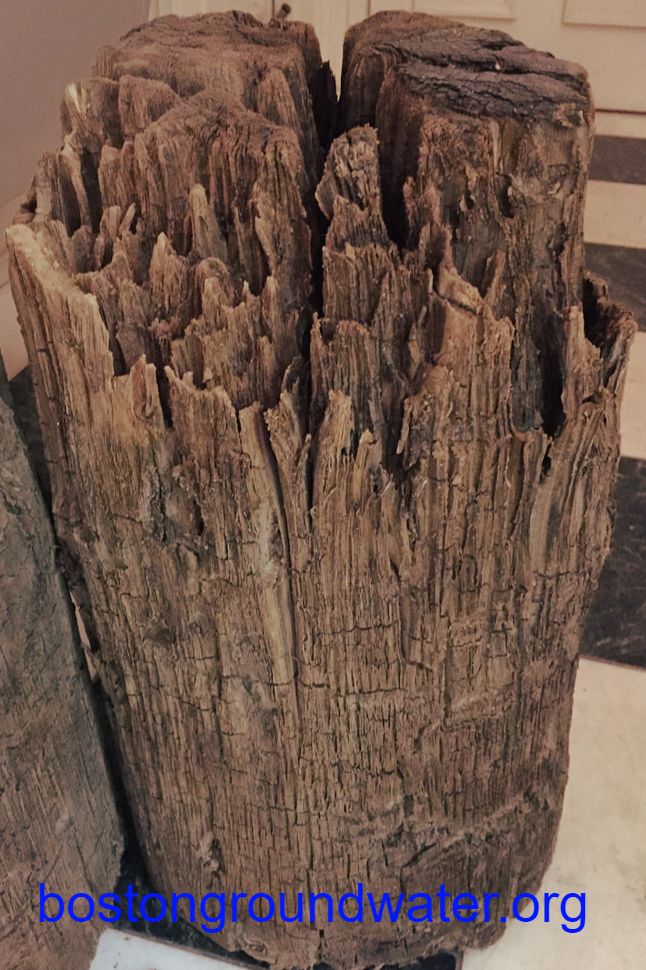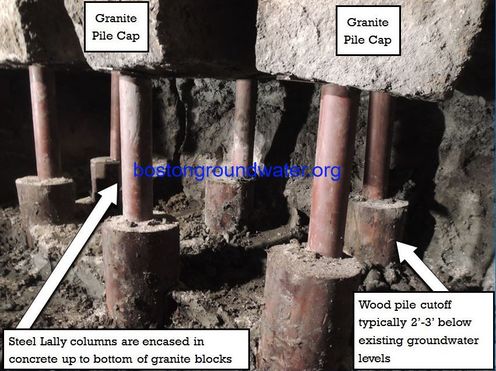Account Login
Sign Up For These Benefits
- Get most recent daily updates
- Save your favorite listings in one place
- Save your search criteria
- Share listings with friends easialy
Already a Member? Login below
New User? Signup below
Contact Us
Boston Ground Water – What to know about the Back Bay
December 16th, 2021
What is the problem?
As the original peninsula settled by the Puritans was so small back in the 17th Century, residents from an early date began to expand it by making new buildable land. This “made land” was formed by dumping sand and gravel on top of the mud flats that originally existed; however, as Boston started to develop as a flourishing city this ‘new land’ is not strong enough to support heavy structures, including multistory brick rowhouses.

Therefore, pilings were driven through the made land and underlying mud to hard clay, typically 30-40 feet below ground surface. Nearly all buildings constructed on made land in the early part of the 20th Century and before are supported on wood pilings. These pilings will last for centuries if they remain submerged in groundwater. However, if groundwater levels drop, the tops of the piles are attacked by microbes and eventually rot, causing severe foundation problems for the building.
Where does this occur?
Throughout Boston! Many Bostonians live or work in older buildings in made land neighborhoods. Such as:
- Fenway
- Back Bay
- South End
- The flats of Beacon Hill,
- Sections of East Boston and many more.
- Visit the website for a complete list: http://www.bostongroundwater.org/overview.html
Is this a new problem?
As this was the type of building foundation system that has been used for centuries in Europe, the potential problem was well known to the builders working on Boston’s made land even in the 19th Century.
Back in the 17th Century, the tops of pilings were generally cut off at a level low enough that builders were confident they would remain covered by groundwater. However, in 1929, the Boston Public Library’s main building in Copley Square required foundation repairs costing over $200,000 (around $3M in today’s dollars) because of failed wood pilings.
Groundwater levels had dropped from those which existed in 1888 when the foundation was installed. In the years since 1929, nearly 200 buildings in Boston have had to have their pilings repaired.
Why do groundwater levels drop?
Over the years since most of the ‘made’ land was created, much infrastructure, including sewers, subway lines, highway tunnels, and deep basements, have been built beneath its surface. When these structures leak (eg/ from a cracked pipe), the water that enters the structure is often drained or pumped away.
This then causes the surrounding groundwater levels to drop toward the level of the leak, a phenomenon called drawdown. If groundwater levels are drawn down below the tops of the pilings, they may be exposed to air, allowing the wood to rot.

Can failed pilings be repaired?
Yes! The typical process to re-support a building on its wooden pilings is called underpinning.
The process is very labor intensive but can be done. Contractors need to dig underneath the building, cut away the rotted section of piling to below the lowest expected future groundwater level, replace it with steel, and encase the steel in concrete. The cost to underpin a typical three or four story rowhouse has generally been over $250,000 with larger buildings costing far more to repair. The good news is that, if groundwater levels again rise to cover the pilings, the rotting process stops when the air in the wood dissipates.

What has the City done?
In 1986, the Boston City Council established the Boston Groundwater Trust to monitor groundwater levels in areas of the city where foundations are threatened by low levels and to make recommendations to solve the problem.
The trustees, who are unpaid volunteers, discovered existing groundwater observation wells that had been installed on public property for various projects and incorporated them into a monitoring network.
Over the years, the city has included legislature to allocate more funding for the group.
- In 2002, the legislature included $1.6 million in the Environmental Bond Bill to build out a comprehensive network.
- In 2005, the City and State governments came together to sign a Memorandum of Understanding creating a City-State Groundwater Working Group that includes all the public agencies responsible for the underground infrastructure. Among other things, all these agencies have pledged to work together to understand the causes of the problem and to repair those problems for which they are responsible.
The City has established a Groundwater Conservation Overlay District that requires people building or renovating properties in the affected area to make sure that their projects will not cause any reduction in groundwater levels and to incorporate systems that will recharge rainwater into the ground instead of sending it all down the sewer.
References:
http://www.bostongroundwater.org/overview.html



